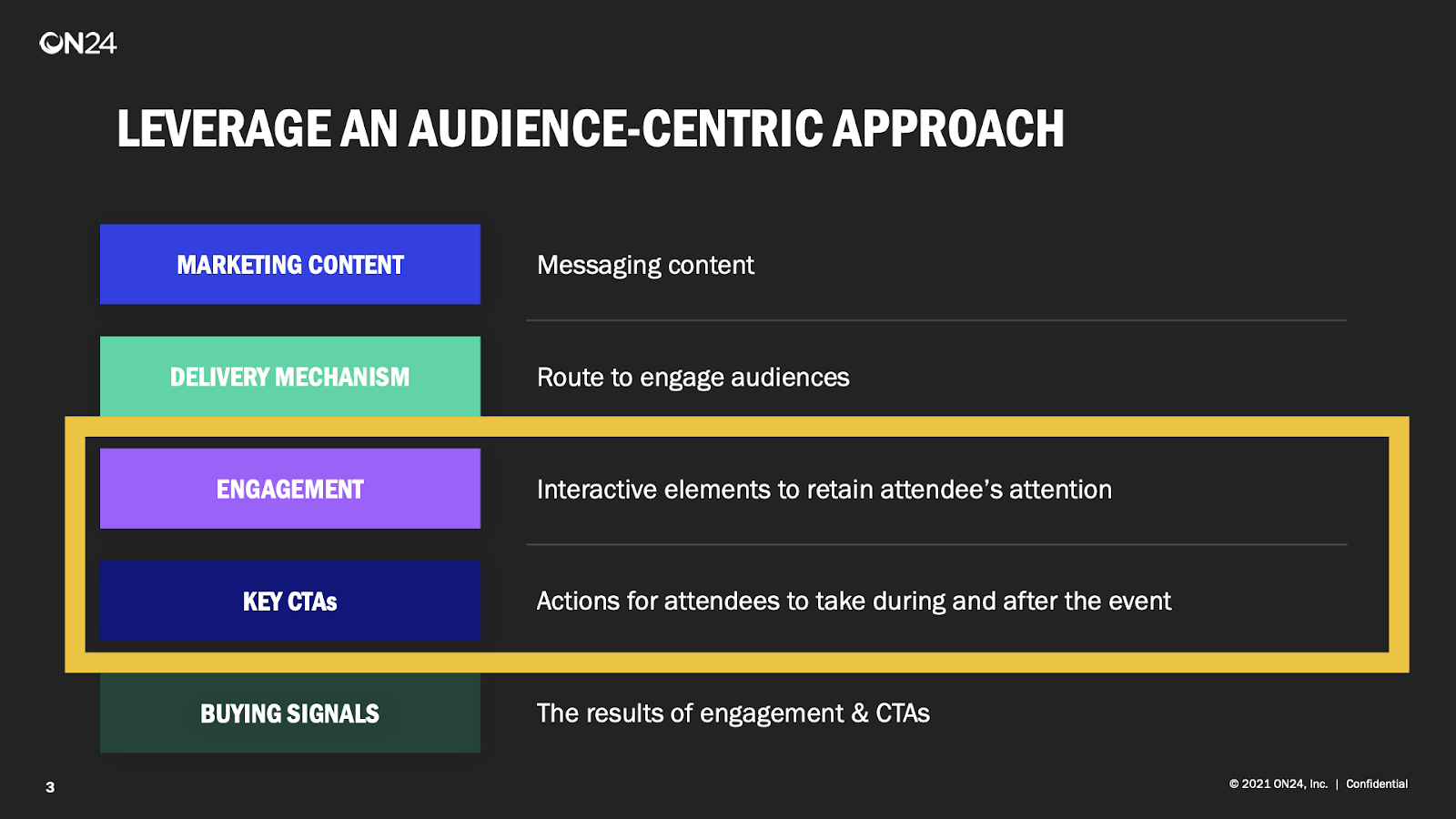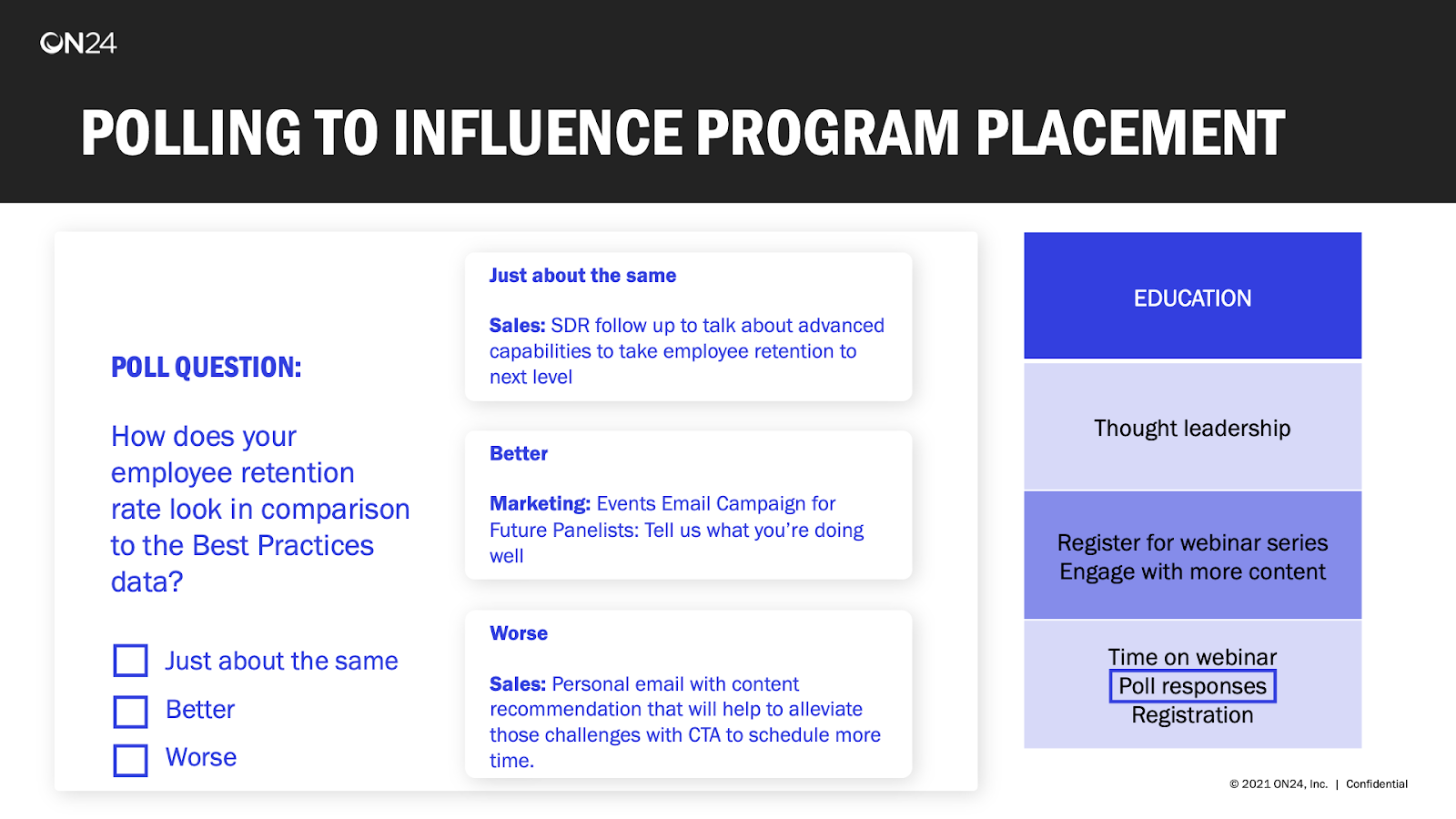Creating Engagement to Capture First-party Data

In our previous blog post, we explored why first-party data is so important and what kinds of first-party data capture there are. The next step in our data refinement journey is to ensure marketing programs are set up to effectively listen for these important signals.
Let’s review how you can use digital engagement opportunities to capture quality first-party data now.
Two Ways To Engage For First-Party Data

Every marketing tactic you host, from webinars to whitepapers to interactive tools, has the opportunity to capture first-party data. For our purposes, however, what is important is the methodology and rigor behind thinking about two components of these tactics: engagement and CTAs.
These two techniques are often confused and used in replace of one another. But treating them separately will yield greater insight into audience behavior.
Engagement
The summary of engagement is how you expect your audience to behave and engage with you during a marketing tactic. This is how as a marketer you will retain an audience member’s attention during an experience.
More engagement equals more first-party data capture that can be leveraged to personalize future programs for those buyers. These would be techniques that include:
-
- Polling
- Q&A
- Conversational bots
And more.
Calls to Action (CTAs)
CTAs are a slight variation on engagement. CTAs differ because they are typically the action you’re looking for your audience to take at the end of an experience. These CTAs are powerful since the first party data capture gathered is often the most straightforward to act on.
CTA techniques include:
-
- Book a meeting
- Speak to sales
- Enroll in a trial
- Schedule a demo
And more.
Using First-Party Engagement To Accelerate Deals
 With an understanding of the role that Engagement and CTAs play in the digital mix, marketers can orchestrate experiences that have separate and distinct actions for both. Further, they can evaluate separately what audience reactions were to these planned engagement tactics.
With an understanding of the role that Engagement and CTAs play in the digital mix, marketers can orchestrate experiences that have separate and distinct actions for both. Further, they can evaluate separately what audience reactions were to these planned engagement tactics.
Doing so allows marketers to chart clear courses of action based on specific data from the experiences. Isolating cohorts of people who respond to a specific engagement technique or CTA can activate specific sales or marketing plays for groups demonstrating specific behaviors.
Personalizing Outreach Based On Engagement Data

Polling can provide powerful insights into the stage of a buyer’s journey or even a prospect’s level of maturity. For example, asking the audience how they compare to an industry-published first party data capture point is a great technique to gather insight.
In the example above, first party data capture was shared around average employee retention for an industry during a virtual event. After highlighting the statistic, attendees were asked how they stand in relation. You can then see, based on responses to the poll, how organizers can treat different attendees in a way that’ll inspire further engagement.
So, out of this example poll, we have three cohorts of respondents we can treat differently from a sales and marketing perspective. For example:
-
- If attendees report they’re doing about average, then marketers can focus messaging for those attendees on moving their programming to a more advanced stage.
- If an attendee says they are already doing better than average, then marketers could reach out and ask them to be a guest on an upcoming panel webinar or even to submit their great work for an awards program.
- If attendees reports they’re below the industry average, then messaging can be much more empathetic and discuss how they can overcome barriers to get their programming to industry average.
Make First-Party Data A Part of Your Organization

First-party data is a powerful tool for sales and marketing. The key to capitalizing on it, however, is to first understand the various types of data that can be selected then select and isolate the ones that are most important to act on.
Most marketers have a wealth of first party data capture at their fingertips. But having a plan on how to respond to first-party signals – before a marketing program is put into action — is essential. Doing so will help you become more audience-centric and make it easier to offer personalized experiences in the future.
